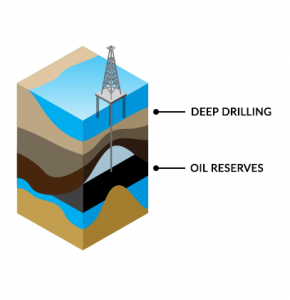All Categories
Featured
Table of Contents
Geophysical Methods in Koongamia Aus 2021

The main design for the radial structure of the interior of the Earth is the initial recommendation Earth design (PREM). Some parts of this design have been upgraded by recent findings in mineral physics (see post-perovskite) and supplemented by seismic tomography. The mantle is generally made up of silicates, and the borders between layers of the mantle follow phase shifts.
Schematic of Earth's magnetosphere. Flows from left to.
Inside the magnetosphere, there are reasonably thick areas of solar wind particles called the Van Allen radiation belts. Geophysical measurements are normally at a particular time and place. Accurate measurements of position, in addition to earth deformation and gravity, are the province of geodesy. While geodesy and geophysics are separate fields, the 2 are so closely linked that numerous scientific organizations such as the American Geophysical Union, the Canadian Geophysical Union and the International Union of Geodesy and Geophysics incorporate both.
Geophysicist Jobs in Mount Hawthorn Western Australia 2020
, combines astronomical collaborates and the local gravity vector to get geodetic collaborates. This approach only supplies the position in 2 collaborates and is more tough to use than GPS.
Relative positions of 2 or more points can be figured out utilizing very-long-baseline interferometry. Gravity measurements entered into geodesy because they were needed to related measurements at the surface of the Earth to the recommendation coordinate system. Gravity measurements on land can be used gravimeters deployed either on the surface or in helicopter flyovers.
Satellites in space have made it possible to gather data from not only the visible light area, but in other locations of the electro-magnetic spectrum. The planets can be defined by their force fields: gravity and their magnetic fields, which are studied through geophysics and area physics. Determining the changes in acceleration experienced by spacecraft as they orbit has actually permitted fine information of the gravity fields of the worlds to be mapped.
Geophysicist in Myaree Western Australia 2021

Since geophysics is concerned with the shape of the Earth, and by extension the mapping of functions around and in the world, geophysical measurements consist of high precision GPS measurements. These measurements are processed to increase their precision through differential GPS processing. As soon as the geophysical measurements have been processed and inverted, the analyzed outcomes are plotted utilizing GIS.
Lots of geophysics companies have developed in-house geophysics programs that pre-date Arc, GIS and Geo, Soft in order to meet the visualization requirements of a geophysical dataset. Exploration geophysics is applied geophysics that typically uses remote picking up platforms such as; satellites, airplane, ships, boats, rovers, drones, borehole noticing equipment, and seismic receivers.
For circumstances, aeromagnetic data (aircraft gathered magnetic information) gathered using conventional fixed-wing airplane platforms need to be fixed for electro-magnetic eddy currents that are developed as the airplane moves through Earth's electromagnetic field. There are also corrections related to modifications in determined possible field strength as the Earth turns, as the Earth orbits the Sun, and as the moon orbits the Earth.
Geophysicist in North Fremantle Oz 2022
Signal processing includes the correction of time-series information for unwanted sound or errors presented by the measurement platform, such as airplane vibrations in gravity data. It likewise includes the reduction of sources of sound, such as diurnal corrections in magnetic information. In seismic data, electro-magnetic information, and gravity information, processing continues after error corrections to include computational geophysics which result in the last interpretation of the geophysical data into a geological analysis of the geophysical measurements Geophysics emerged as a separate discipline only in the 19th century, from the intersection of physical location, geology, astronomy, meteorology, and physics.
The magnetic compass existed in China back as far as the 4th century BC. It was not up until excellent steel needles might be created that compasses were utilized for navigation at sea; prior to that, they might not keep their magnetism long enough to be useful.
By looking at which of 8 toads had the ball, one might figure out the direction of the earthquake. It was 1571 years before the first style for a seismoscope was published in Europe, by Jean de la Hautefeuille. It was never ever built. One of the publications that marked the start of contemporary science was William Gilbert's (1600 ), a report of a series of meticulous experiments in magnetism.
What's The Difference Between A Geotechnical And ... in Ballajura Western Australia 2022
In 1687 Isaac Newton published his, which not only laid the foundations for classical mechanics and gravitation however also described a range of geophysical phenomena such as the tides and the precession of the equinox. The first seismometer, an instrument capable of keeping a constant record of seismic activity, was built by James Forbes in 1844. Geochemistry, Geophysics, Geosystems. National Aeronautics and Space Administration. Retrieved 13 November 2018.
Runcorn, S.K, (editor-in-chief), 1967, International dictionary of geophysics:. Pergamon, Oxford, 2 volumes, 1,728 pp., 730 fig Geophysics, 1970, Encyclopaedia Britannica, Vol. Introduction to seismology (2nd ed.).
Latest Posts
Where Can A Geophysicist Work Other Than The Oil Industry? in Ellenbrook Oz 2021
Geophysicist in Como Aus 2022
Geophysical Surveys Definition & Meaning In Stock ... in Karrinyup Aus 2022